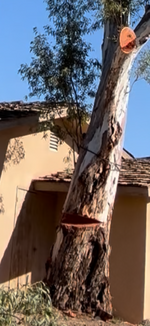stikine
Treehouser
David, your chicken scratch is way better than Kyle's 😁. A lot of it is about the root flare and the logging system that is going to be used. If you can locate the hinge near the root flare then you minimize any scale loss because that area is outside of the scaling cylinder, which is measured down from the smaller diameter of the upper log end.
Ground based logging systems definitely like low stumps. Cable is slightly more tolerant of a higher stump (at least around here).
Ground based logging systems definitely like low stumps. Cable is slightly more tolerant of a higher stump (at least around here).
Last edited:

